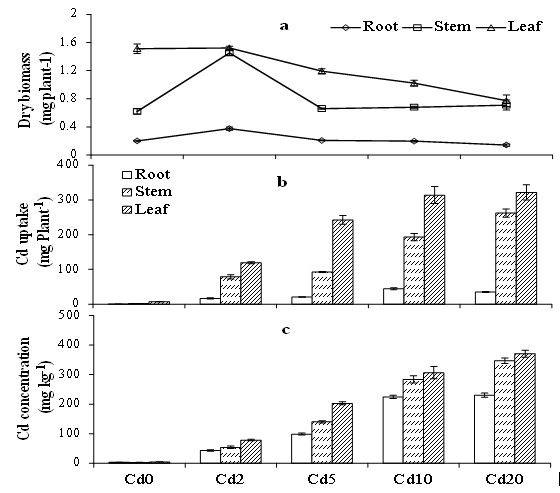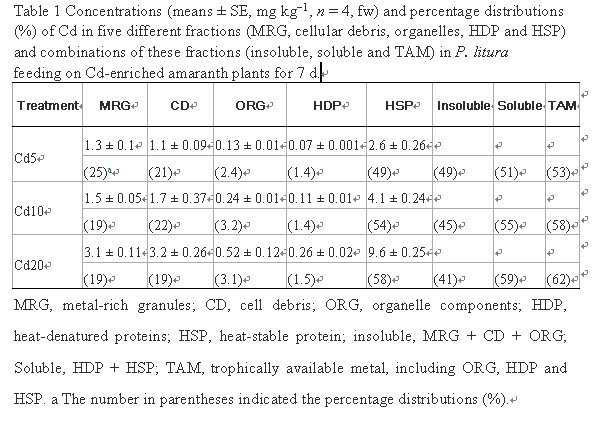

Cadmium contamination has been a worldwide public health concern, because Cd has the potential to bioaccumulate in plants and invertebrates and a greater potential for trophic transfer along some food chains. Metal bioavailability and detoxification in plants is controlled by biological manipulation of the chemical forms of heavy metals. Metal subcellular distribution could reflect metal tolerance tactics and the potential trophic transfer to the organism.
Dr. ZHUANG Ping and MD student DING Ping from Soil Ecology Research Group led by professor XIA Hanping and LI Zhian at South China Botanical Garden, CAS, further investigated the accumulation and detoxification of cadmium along soil-plant-insect food chain. The results showed that: 1) a deconcentration of Cd from contaminated plant (A. hypochondriacus) to insect larvae (P. litura) accompanied by excessive excretion of Cd from insect feces. Although no biomagnification of Cd was observed, mechanisms of Cd detoxification and migration existed in this food chain (Fig. 1); 2) A. hypochondriacus leaves can alleviate Cd toxicity by bonding large amounts of accumulated Cd into pectins and proteins; 3) the large proportions of Cd in HSP fraction (49-58%), MRG (19–25%) and cellular debris (19–22%) in P. litura larvae with increased exposed to dietary Cd has implications for the great detoxification ability of P. litura to Cd, and further confirm that excretion patterns of animals give useful information on probable mechanisms of metal detoxification (Table 1).
This work has been online published in Chemosphere [Accumulation and detoxification of cadmium by larvae of Prodenia litura (Lepidoptera: Noctuidae) feeding on Cd-enriched amaranth leaves, DOI: 10.1016/j.chemosphere.2012.11.038, http://www.sciencedirect.com/science/article/pii/S0045653512014439]. This study was funded by the National Natural Science Foundation of China (No. 40871221).

Fig. 1 Total biomasses (a), Cd concentrations (b) and Cd uptakes (c) in the different parts of Amaranthus hypochondriacus grown in the control, 2, 5, 10 and 20 mg kg-1 Cd treated soils for 40 days (means ± SE, n = 4).


